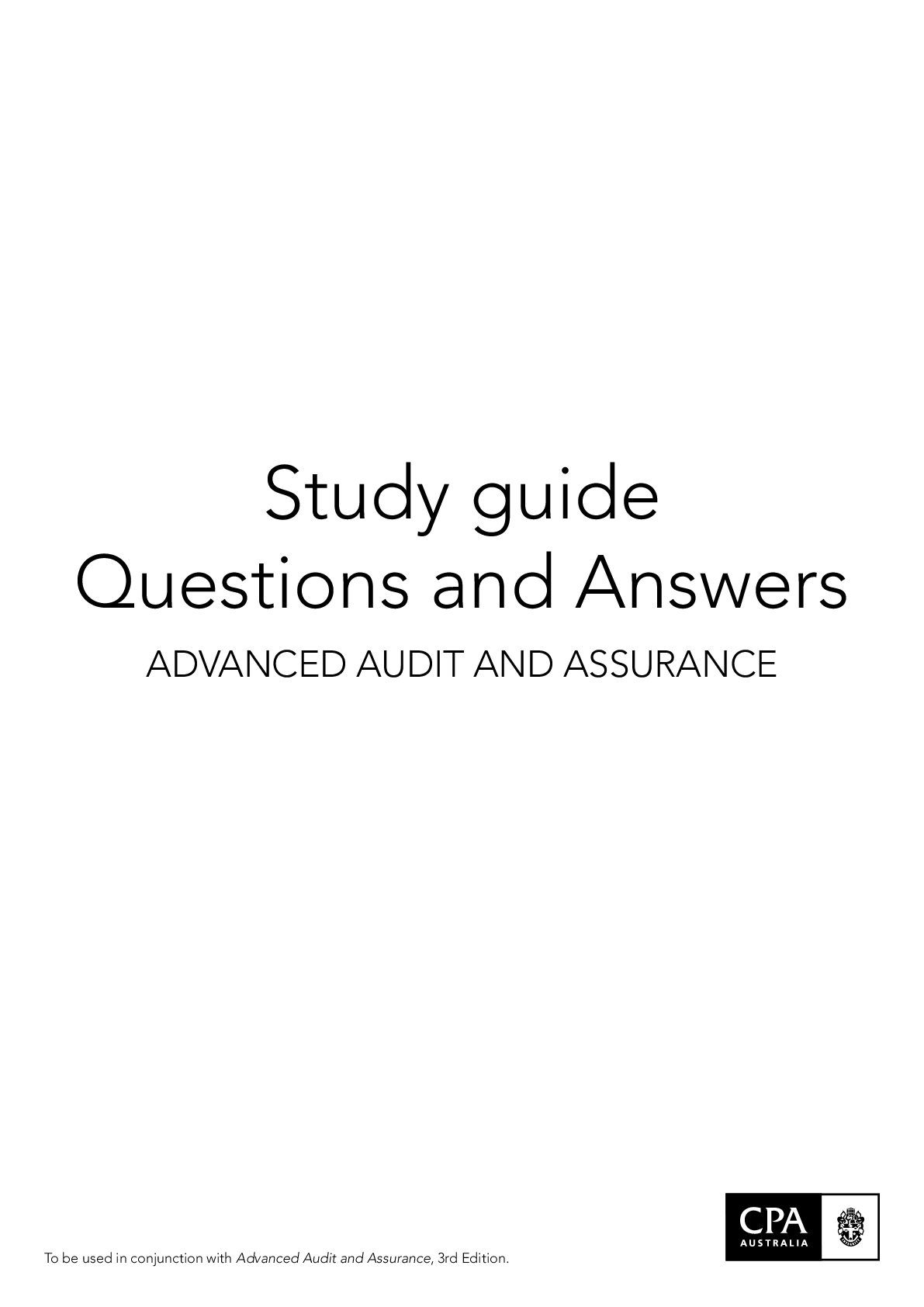Political Science > STUDY GUIDE > POS3713 Midterm 1 – Study Guide Questions and Notes from Class (All)
POS3713 Midterm 1 – Study Guide Questions and Notes from Class
Document Content and Description Below
POS3713 Midterm 1 – Study Guide Questions and Notes from Class POS3713 Midterm 1 – Study Guide Questions 1. How do we know what we know? a. Epistemology – how you know what you know ... b. Ways of knowing something i. Precedent – look at the past ii. Deferring to authority – look to scholars and scientists iii. Intuition/Common Sense – what does your gut say iv. The only thing that stands up time and time again is: observation 2. What do political scientists do, exactly? a. Look at relationships between individuals b. Why analyze relationships? i. Want to understand as much of the political world as possible ii. Rely on observation iii. Design research to collect data c. Political scientists develop causal theories about the political world and test them scientifically (the scientific method) i. Create theory ii. Form testable hypothesis iii. Carry out research to test hypothesis iv. Evaluate research v. Modification and extension 3. What is the difference between descriptive and causal inference? a. Causal Inference: Learning something about how the world works that we didn't know before i. Unknown causal relation between two or more variables b. Descriptive Inference: Learning something about the state of the world we didn't know before i. Unknown fact about a single variable 1. Inference is by definition uncertain 4. Which form of inference are political scientists most interested in? a. Political scientists are most interested in causal inferences. 5. Is the social world deterministic or probabilistic? Why do we care about this distinction? a. Deterministic – relationships such that if some cause occurs, then the effect will occur with certainty b. Probabilistic – such that increases in X are associated with increases (or decreases) in the probability of occurring, but those probabilities are not certainties c. The world of human interactions consists of probabilistic relationships. d. Whereas physical laws like Newton’s laws of motion are deterministic, the social sciences more closely resemble probabilistic causation like that in Darwin’s theory of natural selection e. In political science there will always be exceptions because human beings are not deterministic robots whose behaviors always conform to law like statements. 6. What are variables? What features do they have? a. Variable – a definable quantity that can take on two or more values b. Variables have labels and values. i. The variable label is a description of what the variable is ii. The variable values are the denominations in which the variable occurs 7. What are independent variables? How are they related to dependent variables? Know how to identify each in a theory or hypothesis. a. Independent variable (X) – a variable that is theorized to cause variation in the dependent variable (Y) b. The IV causes the DV c. Hypothesis: Mitt’s Romney’s 47% Tape caused him not to win i. IV: viewing of the tape ii. DV: outcome of the election d. Presidential coattails Theory: Republicans congressional candidates do better in years when Republicans win presidency i. IV: party of winning presidential candidate ii. DV: Republican success 8. What are antecedent and intervening variables? Know how to identify each in a theory or hypothesis. a. X -> Z -> Y (X causes Z which causes Y) b. Antecedent - X c. Intervening – Z d. Example: Labor repression (X) tends to reduce trust in government (Z), which in turn tends to increase the chance of a revolution (Y) e. Example: Incumbency (X) tends to give candidates more name recognition (Z), which tends to increase the chances of winning reelection (Y) 9. What is a unit of analysis? Know how to identify the unit of analysis in a theory or hypothesis. a. A unit of analysis could be a person, a state, or a country for example. b. The unit of analysis is the major entity that is being analyzed in a study. It is the 'what' or 'who' that is being studied. In social science research, typical units of analysis include individuals (most common), groups, social organizations and social artifacts. 10. What is covariation? Why is it important for science? a. Covariation = correlation b. Certain values of X systematically co-occurring [Show More]
Last updated: 1 year ago
Preview 1 out of 17 pages
Instant download
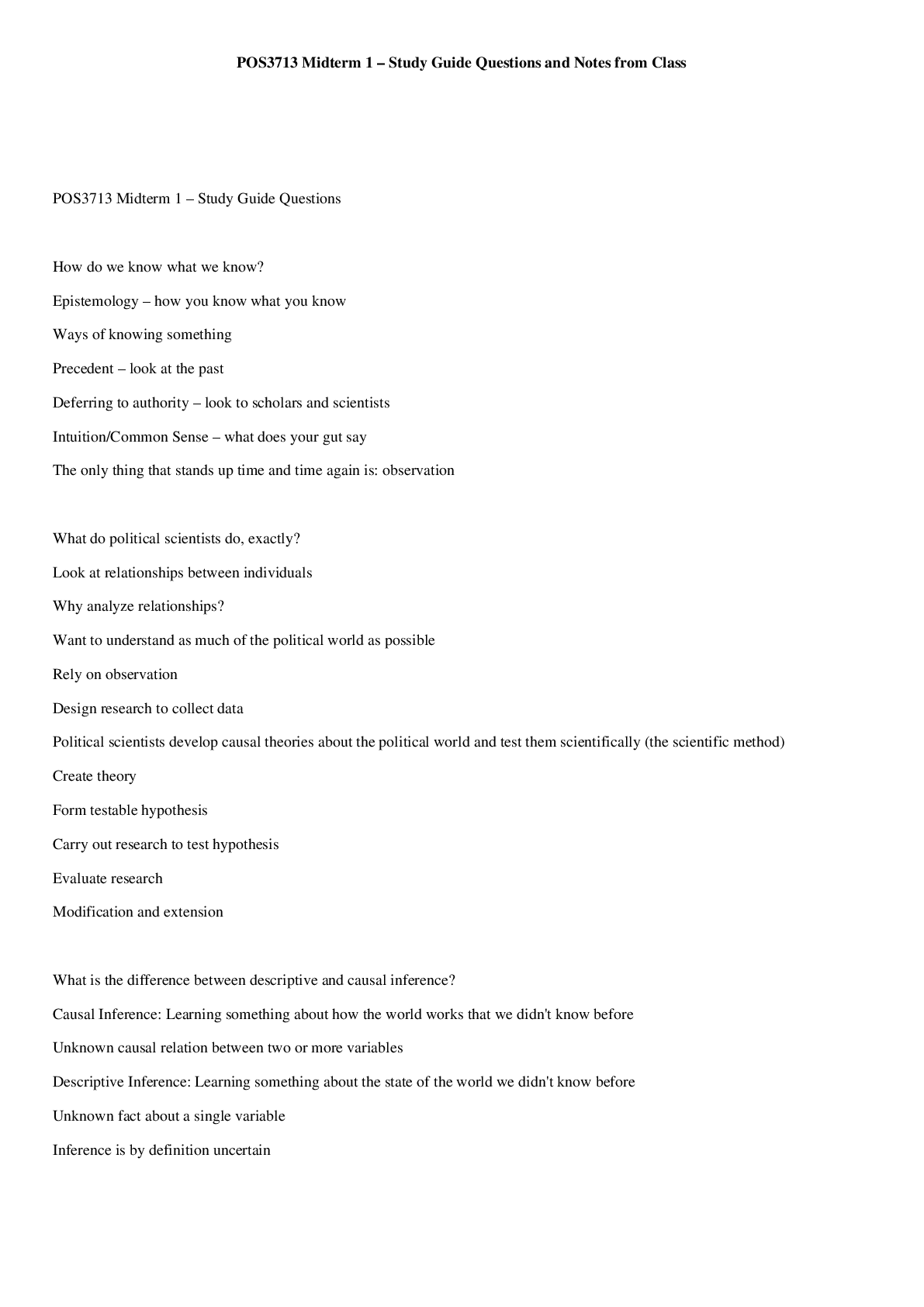
Buy this document to get the full access instantly
Instant Download Access after purchase
Add to cartInstant download
Reviews( 0 )
Document information
Connected school, study & course
About the document
Uploaded On
Mar 05, 2021
Number of pages
17
Written in
Additional information
This document has been written for:
Uploaded
Mar 05, 2021
Downloads
0
Views
93


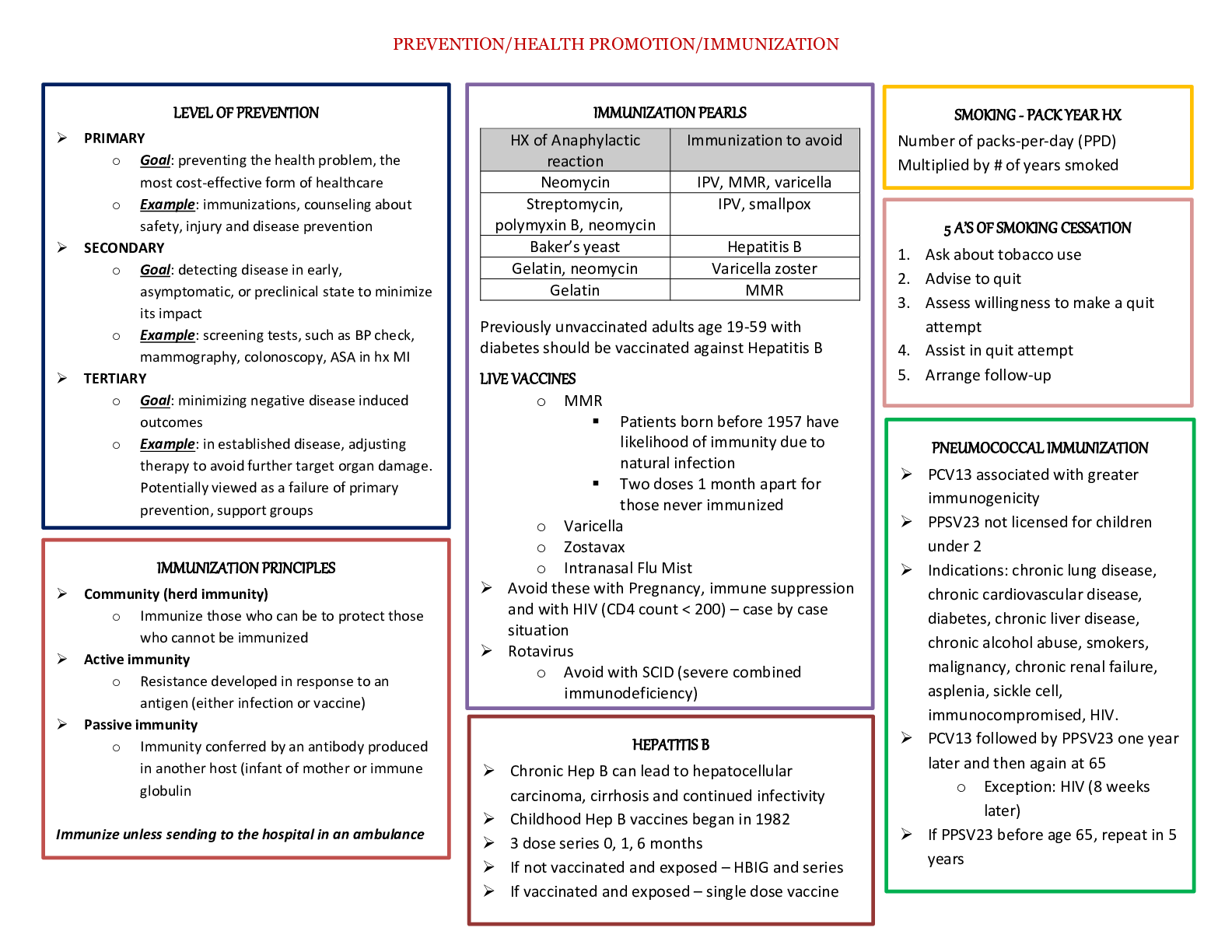


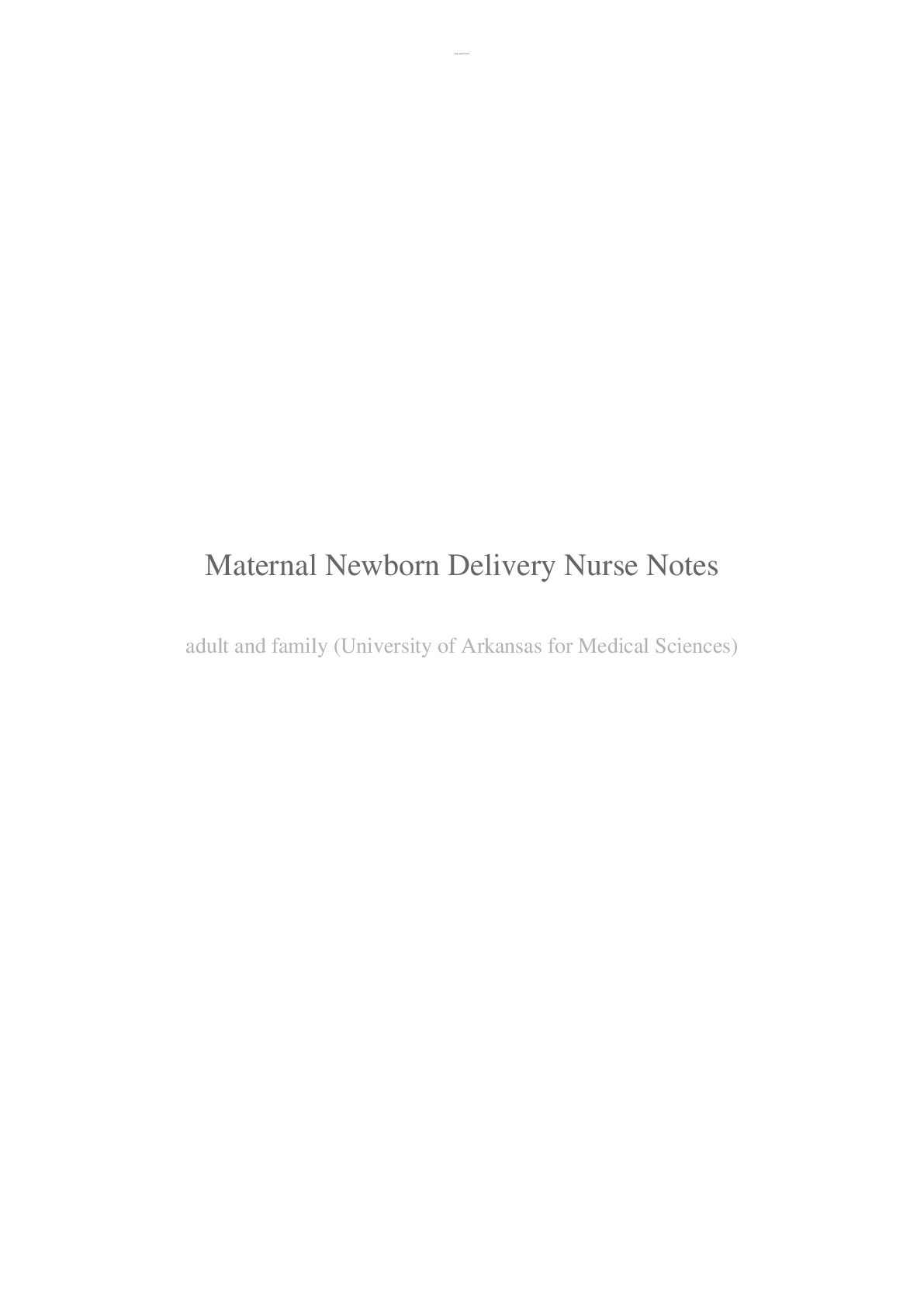


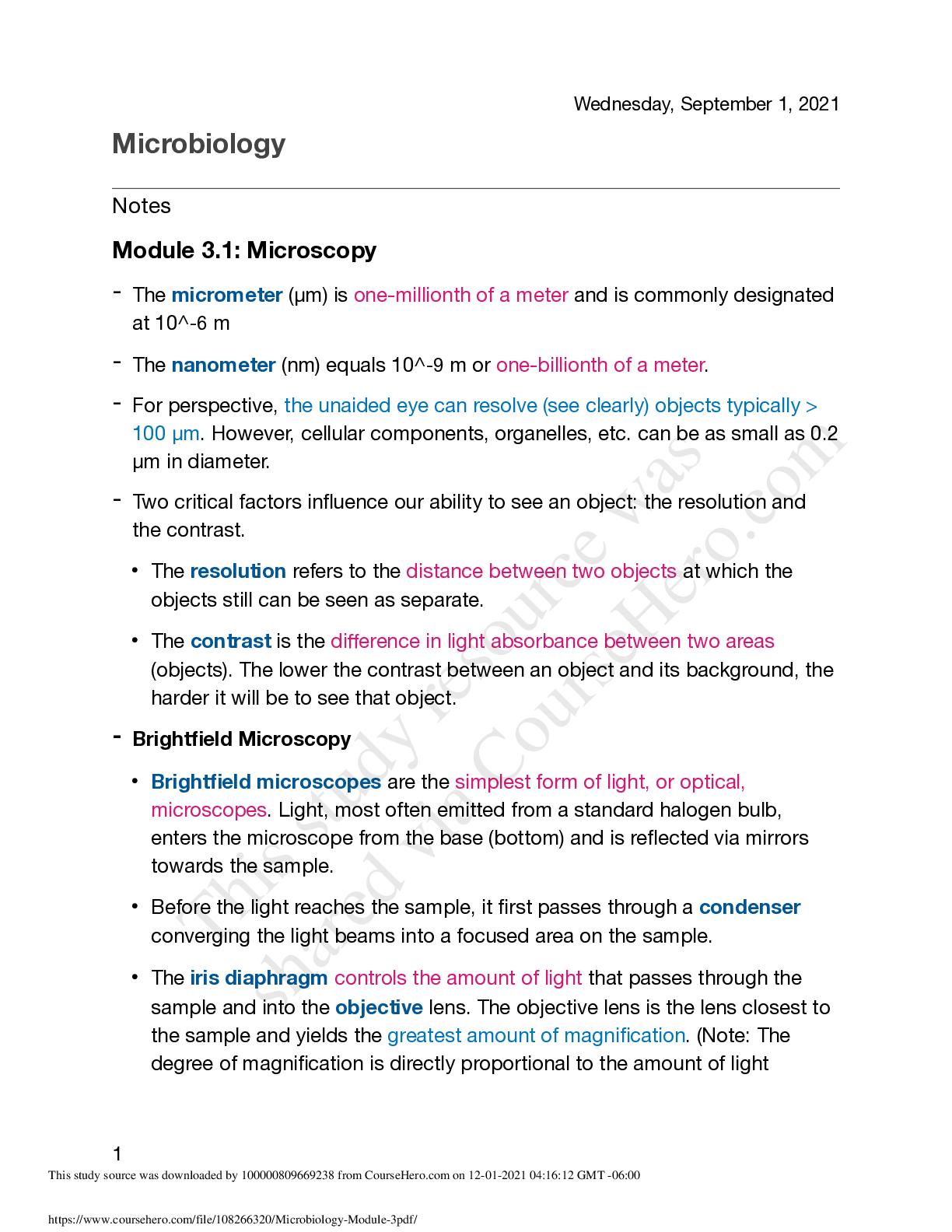



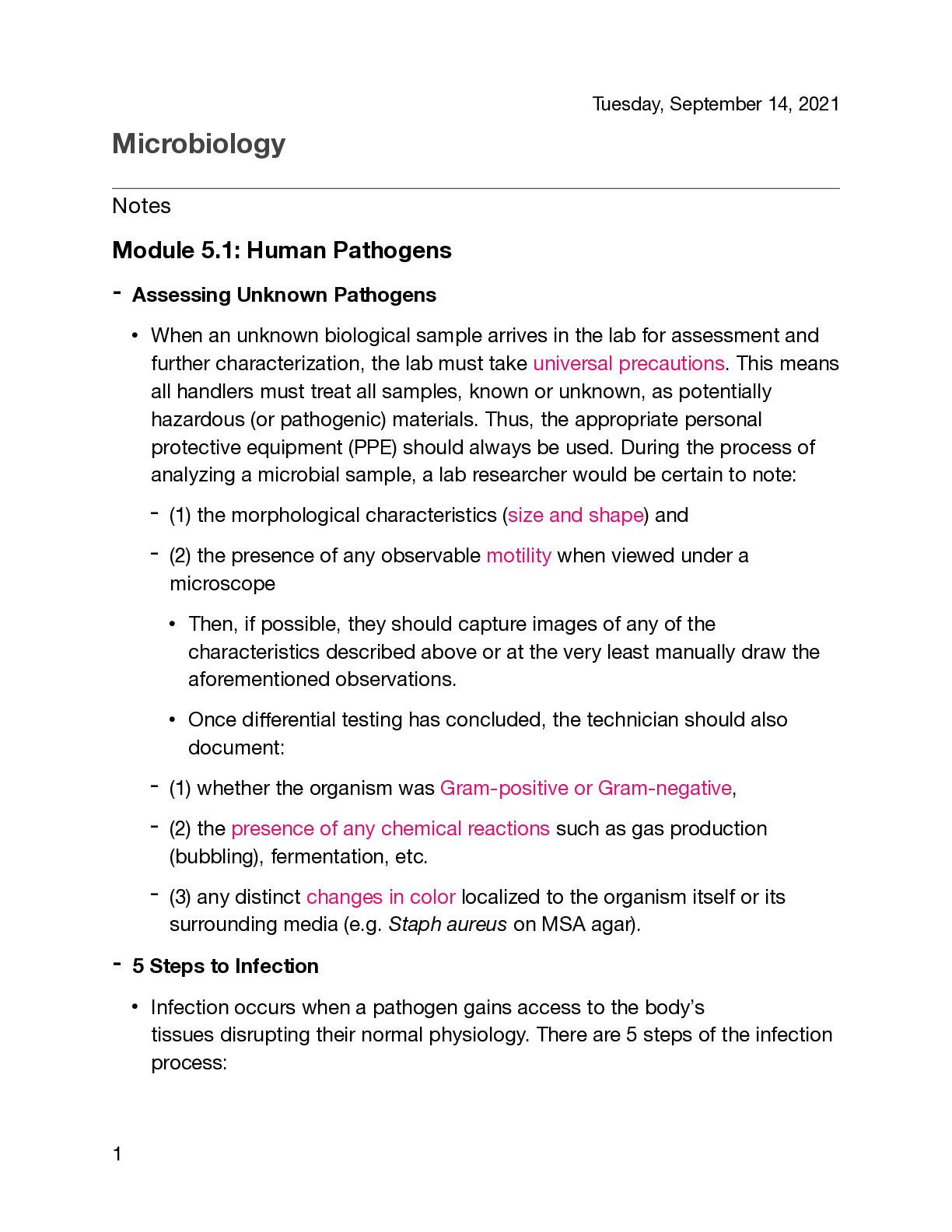

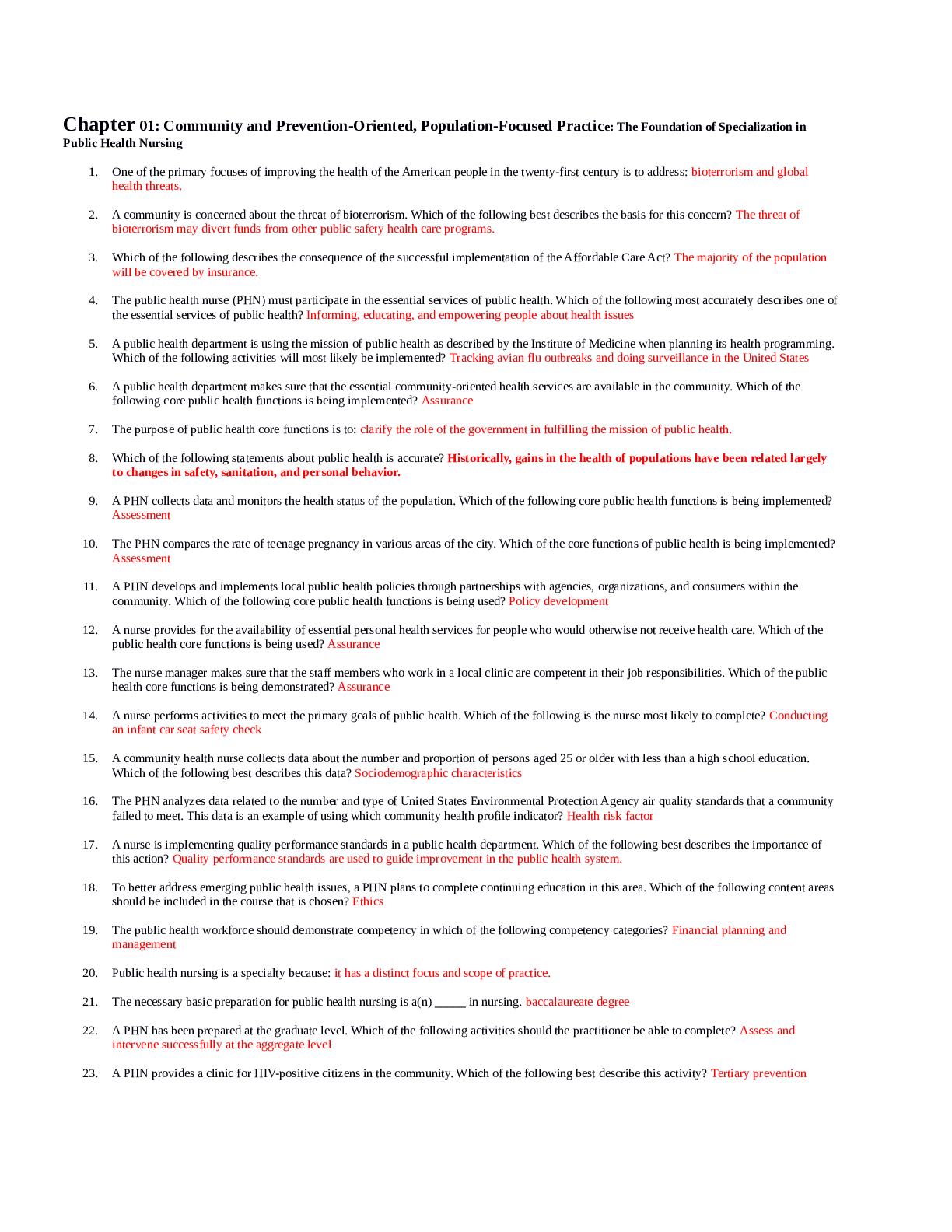


 Primary Care of the Maturing and Aged Family Practicum Midterm Study Guide.png)

 Questions and Answers (latest Update).png)
 Questions and Answers (latest Update).png)
